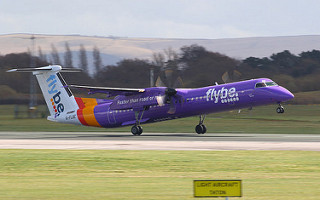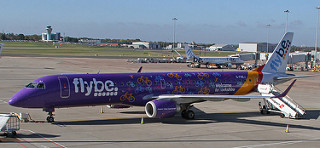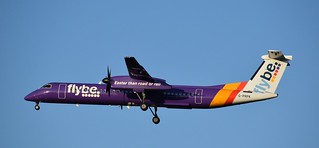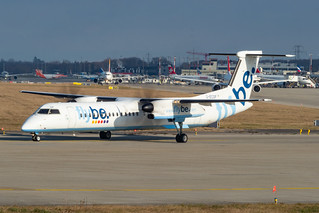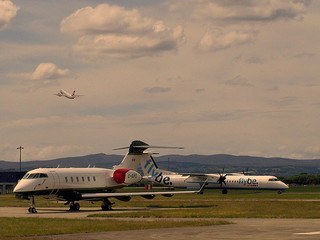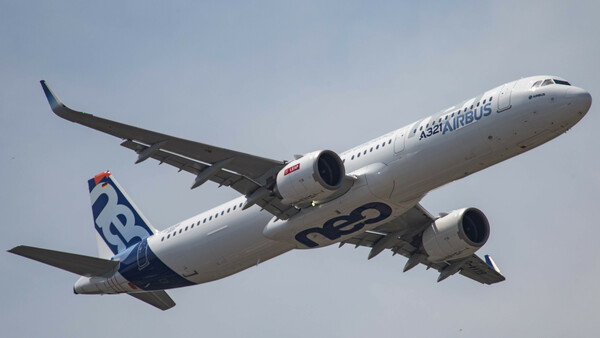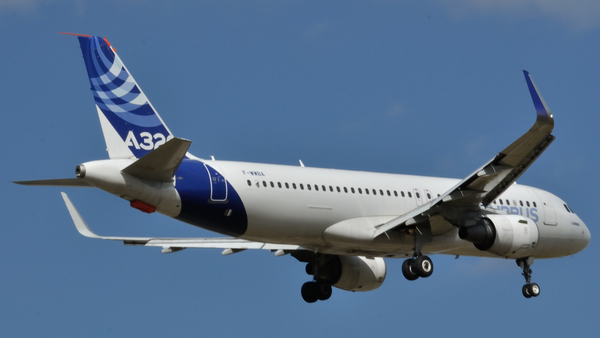Flybe DH8D near Birmingham on Dec 8th 2016, loss of cabin pressure
Last Update: June 9, 2017 / 14:50:18 GMT/Zulu time
Incident Facts
Date of incident
Dec 8, 2016
Classification
Report
Cause
Loss of cabin pressure
Airline
Flybe
Flight number
BE-455
Departure
Manchester, United Kingdom
Destination
Jersey, United Kingdom
Aircraft Registration
G-FLBB
Aircraft Type
De Havilland Dash 8 (400)
ICAO Type Designator
DH8D
The United Kingdom's AAIB released their bulletin concluding the causes of the occurrence were:
Technical cause
The cause of the pressurisation problem was the outflow valve, serial number 00369, which the evidence suggests had a history of being causal or contributory to pressurisation problems in other aircraft. It also appears that the problem did not manifest itself during post installation functional checks as, shown by its fitment to G-KKEV and G-FLBB. In this situation it is sometimes difficult for engineering staff to reject an item which, when subjected to normal checks detailed in the AMM, meets the requirements for release to service.
Effect on the commander and co-pilot
It is probable that the loss of pressurisation was gradual but maintained just within system limits during the climb to FL250. When the aircraft was established in the cruise at FL250 the cabin pressure altitude continued to climb over a period of two minutes until the warning level was reached. Although by no means debilitating in this case, it shows how quickly the flight deck crew appeared to suffer the early signs of hypoxia.
The AAIB analysed:
Aircraft examination
The aircraft was flown back to Manchester, unpressurised, for a system fault diagnosis which found the outflow valve to have been the cause of the depressurisation. The faulty outflow valve was replaced and the aircraft returned to service.
Component history
The operator’s engineering team researched the history of the faulty outflow valve, serial number 00369, and found that it was originally fitted to G-ECOT at build. It was removed from G-ECOT in April 2015 as part of a pressurisation system fault diagnosis, where no specific faulty component could be identified, but the fault was eventually resolved after multiple component replacements. The same outflow valve was fitted to G-KKEV in September 2015. Whilst fitted to G-KKEV, during a climb at FL200, the crew experienced a sudden cabin altitude rate increase with a momentary fault light which appeared to cure itself without intervention. This was a repeat of a similar occurrence three days before and after diagnosis the outflow valve was replaced. It was then fitted to G-FLBB on 7 December 2016 to cure a problem described as ‘pressurisation erratic in descent’.
This work was carried out the day before the loss of cabin pressure en route to Jersey. The valve has now been removed from service and quarantined and is the subject of a reliability investigation being carried out by the spares provider and the original equipment manufacturer (OEM).
Cockpit crew actions and observations
The co-pilot was quick to react, understand the situation and take appropriate action.
Concurrently the commander was completing a Technical Log entry and at this point the electronic flight bag (EFB) and its mounting fell off the windscreen. The commander saw the co-pilot was ahead of him in donning his oxygen mask and so instructed him to take control and carry out the emergency descent vital action drills, in accordance with the QRH. The commander discarded the Technical Log and moved the EFB out of the way before donning his oxygen mask. Although all of these actions only took a few seconds, both crew describe feeling slightly lightheaded. In the commander’s own analysis, after the event, he realised that he was having difficulty completing the Technical Log, which was a relatively simple task and therefore considered that he was already slightly hypoxic when the pressurisation warning occurred. He also believes that this affected his performance and slowed his initial reactions to the situation.
Initially the descent was on the autopilot but the co-pilot felt the rate of descent was too low and disengaged the autopilot and manually increased the rate of descent from 2,000 fpm to 3,500 fpm. With hindsight the co-pilot felt that he should not have deselected the autopilot during the emergency descent. The EFB falling from the windscreen and the oxygen mask microphone difficulties added to the already heightened workload. With hindsight the commander considered all of this to have influenced the remainder of the flight and the final approach into Jersey which was “not up to the usual standard”. After landing the crew realised the significant effects that hypoxia had had on their performance.
Cabin crew actions
During the event the senior cabin crew (SCC) member and cabin attendant felt the aircraft suddenly adopt a descent profile and saw the seat belt signs illuminate. Although they noticed their “ears popping” they did not associate this with a depressurisation and did not experience symptoms of hypoxia. Initially they were unable to contact the cockpit crew but realised there was a problem and secured the cabin anyway. The cabin crew were unaware of the difficulties the commander was having with his microphone in the early stages of the incident. Communication was eventually established as the aircraft descended through FL150. The cabin crew actions were taken without knowledge of the problem but good crew resource management (CRM) and training meant that cabin and passenger safety was maintained.
Technical Log
The commander had noted the Technical Log entry regarding the pressurisation problem on 7 December 2016. The SCC member was also aware of the problem on this aircraft as she had flown in it over the previous two days. With hindsight the commander felt that had time allowed he would have liked to brief his crew on the potential outcomes in the light of the Technical Log entries.
Incident Facts
Date of incident
Dec 8, 2016
Classification
Report
Cause
Loss of cabin pressure
Airline
Flybe
Flight number
BE-455
Departure
Manchester, United Kingdom
Destination
Jersey, United Kingdom
Aircraft Registration
G-FLBB
Aircraft Type
De Havilland Dash 8 (400)
ICAO Type Designator
DH8D
This article is published under license from Avherald.com. © of text by Avherald.com.
Article source
You can read 2 more free articles without a subscription.
Subscribe now and continue reading without any limits!
Read unlimited articles and receive our daily update briefing. Gain better insights into what is happening in commercial aviation safety.
Send tip
Support AeroInside by sending a small tip amount.
Related articles
Flybe DH8D at Manchester on Sep 4th 2019, engine shut down in flight
A Flybe de Havilland Dash 8-400, registration G-FLBB performing flight BE-817 from Manchester,EN to Isle of Man (UK) with 38 people on board, was…
Flybe DH8D near Dublin on Jul 31st 2015, smoke in cockpit, loss of communication
A Flybe de Havilland Dash 8-400, registration G-FLBB performing flight Be-664 from Knock (Ireland) to Manchester,EN (UK) with 74 people on board, was…
Flybe DH8D at Newquay on Nov 14th 2019, aileron cable broke
A Flybe de Havilland Dash 8-400, registration G-FLBE performing flight BE-2187 from Newquay,EN to London Heathrow,EN (UK) with 59 passengers and 4…
Flybe E195 at Exeter on Feb 28th 2019, rejected takeoff due to haze on board as result of maintenannce prompts evacuation
A Flybe Embraer ERJ-195, registration G-FBEJ performing flight BE-4321 from Exeter,EN (UK) to Alicante,SP (Spain) with 100 passengers and 5 crew, had…
Flybe DH8D near BIrmingham on Jul 22nd 2019, cabin pressure problems
A Flybe de Havilland Dash 8-400, registration G-PRPK performing flight BE-1331 from Edinburgh,SC to London City,EN (UK) with 56 passenges and 4 crew,…
Flybe DH8D near Manchester on Nov 22nd 2019, engine shut down in flight
A Flybe de Havilland Dash 8-400, registration G-ECOF performing flight BE-774 from Southampton,EN to Edinburgh,SC (UK) with 69 people on board, was…
Flybe DH8D near Exeter on Nov 15th 2018, altitude disagree
A Flybe de Havilland Dash 8-400, registration G-JECR performing flight BE-3501 from Exeter,EN (UK) to Paris Charles de Gaulle (France), was enroute…
Newest articles
Wizz UK A21N at Prague on Sep 11th 2025, tail strike on landing
A Wizz Air UK Airbus A321-200N, registration G-XLRA performing flight W9-5775 from London Gatwick,EN (UK) to Prague (Czech Republic), landed on…
PIA A320 at Lahore on Jan 17th 2025, landed on wrong runway
A PIA Pakistan International Airlines Airbus A320-200, registration AP-BON performing flight PK-150 from Dammam (Saudi Arabia) to Multan (Pakistan)…
Subscribe today
Are you researching aviation incidents? Get access to AeroInside Insights, unlimited read access and receive the daily newsletter.
Pick your plan and subscribePartner

ELITE Simulation Solutions is a leading global provider of Flight Simulation Training Devices, IFR training software as well as flight controls and related services. Find out more.
SafetyScan Pro provides streamlined access to thousands of aviation accident reports. Tailored for your safety management efforts. Book your demo today
AeroInside Blog
Popular aircraft
Airbus A320Boeing 737-800
Boeing 737-800 MAX
Popular airlines
American AirlinesUnited
Delta
Air Canada
Lufthansa
British Airways








